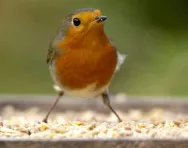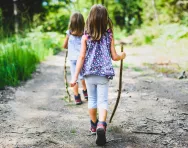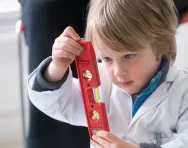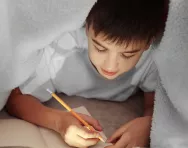Important update from TheSchoolRun
For the past 13 years, TheSchoolRun has been run by a small team of mums working from home, dedicated to providing quality educational resources to primary school parents. Unfortunately, rising supplier costs and falling revenue have made it impossible for us to continue operating, and we’ve had to make the difficult decision to close. The good news: We’ve arranged for another educational provider to take over many of our resources. These will be hosted on a new portal, where the content will be updated and expanded to support your child’s learning.
What this means for subscribers:
- Your subscription is still active, and for now, you can keep using the website as normal — just log in with your usual details to access all our articles and resources*.
- In a few months, all resources will move to the new portal. You’ll continue to have access there until your subscription ends. We’ll send you full details nearer the time.
- As a thank you for your support, we’ll also be sending you 16 primary school eBooks (worth £108.84) to download and keep.
A few changes to be aware of:
- The Learning Journey weekly email has ended, but your child’s plan will still be updated on your dashboard each Monday. Just log in to see the recommended worksheets.
- The 11+ weekly emails have now ended. We sent you all the remaining emails in the series at the end of March — please check your inbox (and spam folder) if you haven’t seen them. You can also follow the full programme here: 11+ Learning Journey.
If you have any questions, please contact us at [email protected]. Thank you for being part of our journey it’s been a privilege to support your family’s learning.
*If you need to reset your password, it will still work as usual. Please check your spam folder if the reset email doesn’t appear in your inbox.
10 home education ideas that hardly cost a penny
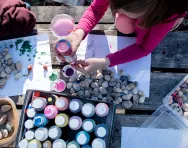
Raising kids can be an expensive business. There’s school uniform to buy, hungry mouths to feed, extracurricular clubs to pay for – and the list goes on.
But not everything you do with your child has to cost money, says Helen Lewis, co-author of Teaching on a Shoestring (Crown House, £16.99).
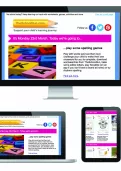
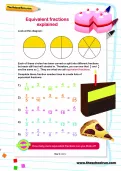
Start a unique learning programme!
- Weekly programme for each school year
- Worksheets sent direct to your inbox
- Keeps your child's learning on track
‘There are so many cheap and free activities out there that engage children and provide opportunities for play, problem-solving and conversation,’ Helen says.
‘What matters to your child above all is time spent together.’
We asked Helen to share her top 10 ideas for at-home learning on a shoestring.
1. Journey sticks
When you’re out on a walk, pick up a stick and encourage your child to collect natural objects such as leaves, feathers and acorns.
Back at home, help your child attach the things they found to their stick, using wool, thread or glue, to create a ‘journey stick:’ a concrete reminder of their outing.
‘As well as encouraging your child to remember and talk about the walk, this is a great problem-solving activity, as you need to work together to find out how to attach the objects to the stick,’ Helen says.
2. Rock museum
Children are attracted to stones and pebbles as if by magnetism, so tap into their enthusiasm by helping them set up their own rock museum.
Get your child to collect stones of different shapes, sizes and colours, and arrange them in a way that pleases them – for example, by size.
Encourage them to use a magnifying glass to examine each stone and write a label or make an annotated drawing explaining its characteristics.
3. Fill It
The humble cardboard box has so many uses, but a game of Fill It is a great way to entertain your child while also giving them valuable insights into number, measure and volume.
Give each player a small cardboard box of roughly the same size, then take it in turns to roll the dice and add the right number of cups of sand to the box.
Who will fill their box first, and how many cups of sand will they need?
4. Leaf bowls
Take your child out in the garden or to a nearby park, and collect a selection of leaves.
Back home, take two identical plastic bowls, and wrap the outside of one in cling film.
Layer the leaves over the cling film so it’s well covered, using diluted PVA glue to hold them in place. Then cling film over the leaves, put the matching bowl on top and squeeze them together.
After a few days drying in a warm place, remove the bowl and cling film, and you’ll be left with a beautiful leaf bowl.
‘This is a nice activity to capture the colours of autumn and make something you can keep and talk about,’ Helen explains.
5. Apple tasting
Anything that encourages children to eat more fruit is a big win in our opinion, so why not organise an apple tasting session?
Chop a selection of apples into small pieces and blindfold your child so they can describe how each one tastes. Encourage them to use adventurous vocabulary, and rank the apples in order of preference.
6. Glorious mud
‘Many kids love anything to do with mud; there’s something very attractive about splashing in a muddy puddle and getting your hands dirty,’ says Helen.
Playing with mud is the ultimate rainy day activity, and as long as your child washes their hands well afterwards, there’s no need to worry about germs.
Can they watch what happens to a patch of bare ground as the rain comes down and turns it to mud? Can they make a mud pie, or squelch about with bare feet?
‘You only need a very small space to have a lot of fun,’ Helen adds.
7. Ice building
Ice cubes make brilliant building blocks for constructing icehouses, igloos and fairy gardens.
Get your child to pour different colours of juices into an ice cube tray, or add berries, chopped herbs or small flowers to each section.
Then let them experiment with building different structures with the frozen cubes. Take photos of what they make to preserve them for posterity.
8. Yoghurt art
Did you know that in Japan, shallow bowls of yoghurt are used as a blank canvas for artists?
Let your child have a go at food art by giving them a bowl of yoghurt, icing pens, and a variety of fresh and dried fruits such as berries, banana chips and apricots.
They can use the icing pens to draw or write on the yoghurt, or create patterns using the fruit. See if they can copy a pattern or picture you give them, or come up with their own.
‘Eating well is so important for children, but making the healthy choice isn’t always easy,’ Helen says. ‘This activity is a lot of fun but also helps get the healthy eating message across.’
9. Egg box garden
Children love planting seeds and tending to them as they grow, and egg boxes make perfect mini gardens for green-fingered kids.
Fill each cup with a little compost then add some seeds: fast-growing ones like grass or cress are ideal.
In early summer, try planting a sunflower seed in each section, and see which grows tallest or has the biggest blooms: if you want to plant them out, just tear the bottom off the carton.
10. Footprint fun
There’s so much that you and your child can do with footprints.
Try gathering up a selection of shoes from around the house, and look at what sort of footprint they would make. Stand in a shallow tray of water then walk along the garden path, comparing the different sizes and shapes of the footprints. Have a go at walking backwards, jumping or hopping and see how that changes them.
‘You can also explore other types of footprint made by birds or animals,’ Helen adds. ‘Try scattering bird seed in a patch of soft mud, and see if you collect any prints.’

